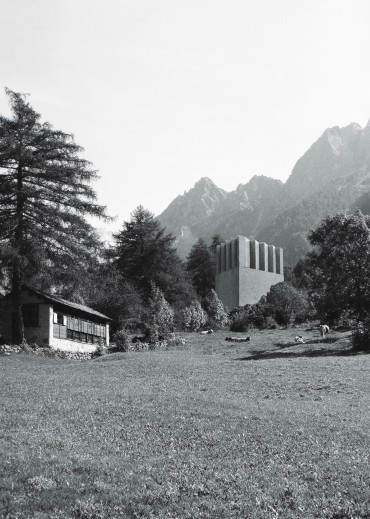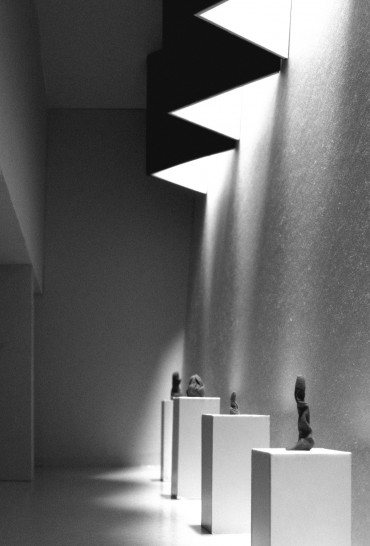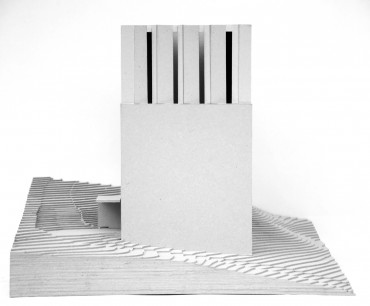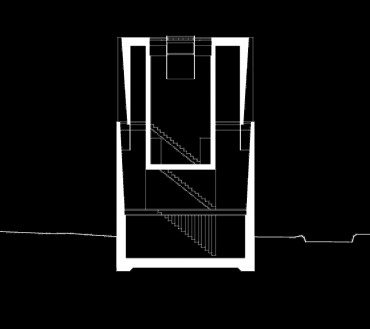Selected Topic
Issue 3 - On Giacometti – Physical and Cultural Landscapes in the Bergell (June 2011)
Show articles
Project by Dario Wohler: exterior view.

Project by Dario Wohler: interior view.

Project by Dario Wohler: model.

Project by Dario Wohler: section.
4.7.2012 – Issue 3 - On Giacometti – Concheiro Isabel – Studio
Archaic expression
Student: Dario Wohler
Dario Wohler's project raises two interesting questions in relationship with the physical and cultural conditions of the place. On one hand, the dialogue with the strong topographic conditions of the Bergell valley. On the other, the definition of the exhibition space by means of light to create the specific spatial conditions for a Giacometti museum in Stampa.
Alberto Giacometti's memories of Stampa often refer to the strong elements of the Bergell landscape: the impressive mountains, the meadows and the trees. The project establishes an interesting dialogue with these elements, appearing as a permanent and archaic presence into the place; a rough texture concrete monolith in close relationship with the geological cycles of the Bergell landscape. The project is located outside the village, following a path towards the mountains in the limit between the meadow and the forest, in close relationship with the natural conditions of the place.
Inside this massive volume emerging from the ground, the exhibition space is defined by a vertical sequence towards the light; an indirect and mysterious light coming exclusively from the top. The space is activated by the light like in a baroque scenery, where the visitor cannot identify the source of light but its reflection in the space. The parcours starts in a dark reception space, follows in an intermediate space lightened by the reflection of the top light in the walls and finishes in the small scale exhibition spaces of dramatic proportions and specific light conditions of the upper level.
The interest of the project derives on one hand from its duality between archaism and modernity and on the other from the specific light device that defines the spatial and light conditions of the museum and the expression of this new contemporary presence in the valley.
Download article as PDF

